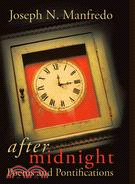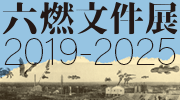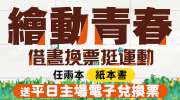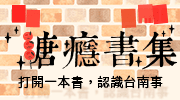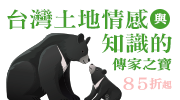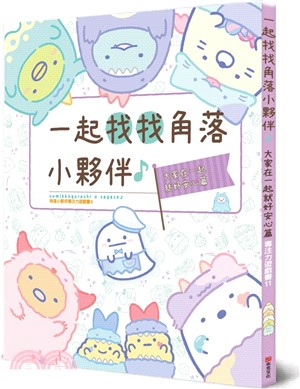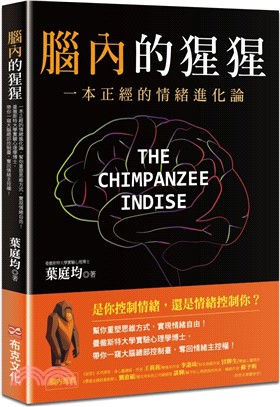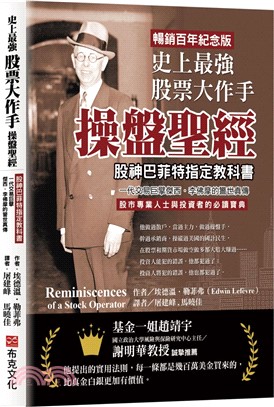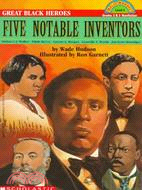台灣文學英譯叢刊(No. 46)
商品資訊
系列名:台灣文學英譯叢刊
ISBN13:9789863504153
替代書名:Taiwan Literature: English Translation Series, No. 46 ( Special Issue on Contemporary Poetry from Taiwan)
出版社:臺大出版中心
作者:Kuo-ch'ing Tu(杜國清); Terence Russell(羅德仁)-編
出版日:2020/11/04
裝訂/頁數:平裝/272頁
規格:21cm*14cm*1.6cm (高/寬/厚)
商品簡介
This issue contains the verse of twenty-four poets.
From 1924, when Hsieh Chun-mu first published four “Poems in Imitation,” the development of new poetry in Taiwan has a history of almost one hundred years. The roots of new poetry in Taiwan with its “twin flower bulbs,” to use the phrase coined by Chen Chien-wu, has now bloomed and borne fruit. It manifests diversified themes, and places great stress on both artistic expression and social concern. It recognizes globalization as the major trend of the times, and maintains a dynamic balance between nativist consciousness and the ensibilities of the Chinese cultural diaspora. Taiwan literature and its new poetry written in Chinese should have a place in the Chinese world community,as well as in the history of world literature. Limited by the space allowed for the journal, we could only select works related to “local” and “quotidian” writing. Yet we hope to observe through these works the manner in which the unique charm and gracefulness of contemporary poetry from Taiwan has blossomed in the garden of world literature.
這一專輯精選具有代表性的詩人二十四家。
從1924年謝春木發表「詩的模仿」四首算起,台灣新詩的發展也有將近一百年的歷史。新詩「兩個球根」在台灣已經開花結果,呈現出主題多元,創作藝術與關懷現實並重,面對全球化的時代趨勢,保持本土意識與文化離散互相呼應和抗衡。台灣文學和以華文創作的新詩,不僅在華人世界,甚至在世界文學的大花園裡,都應該占有一席之地。我們出版這一專輯,收到篇幅的限制,只能以「地方與日常」選錄相關詩作,藉以展現台灣當代詩在世界花園裡一枝獨秀的風姿。
作者簡介
【About the Editors】
Kuo-ch'ing Tu, born in Taichung, Taiwan. His research interests include Chinese literature, Chinese poetics and literary theories, comparative literature East and West, and world literatures of Chinese (Shi-Hua wenxue). He is the author of numerous books of poetry in Chinese, as well as translator of English, Japanese, and French works into Chinese.
Terence Russell is Senior Scholar in the Asian Studies Center at the University of Manitoba. He has an interest in contemporary literature in Chinese, especially the literature of Taiwan's Indigenous people. Dr. Russell has been a regular contributor to Taiwan Literature: English Translation Series, and was the guest editor of Issue 24 on Taiwan Indigenous myths and oral literature.
Horng Shuling was born in 1962 in Taipei City. She has a Ph.D. from the Graduate School of Chinese Literature of National Taiwan University (NTU) and is currently a professor in the Chinese Literature Department of NTU.
【About the Translators】
John Balcom teaches at the Middlebury Institute of International Studies at Monterey. His most recent translation is My Village: Selected Poems, 1972–2014 by Wu Sheng, published by Zephyr Press.
Chang Fen-ling received her B.A. in English from National Taiwan Normal University. A prolific literary critic and award-winning translator, she has translated into Chinese over thirty volumes of poetry with her husband Chen Li. She has also translated two books of Chen Li's poems into English, Intimate Letters: Selected Poems of Chen Li and The Edge of the Island.
Yingtsih Hwang is an independent scholar and translator based in Monterey.
Brian Skerratt is an assistant professor at the Graduate Institute of Taiwan Literature and International Cultural Studies at National Chung Hsing University, Taiwan. His research and teaching focus on modern and contemporary poetry in Chinese, comparative poetics, and ecopoetics. Before joining Chung Hsing, he taught at the Centre for China Studies at Chinese University of Hong Kong. He was a Fulbright Senior Scholar at National Chengchi University and a postdoctoral researcher at the Institute of Chinese Literature and Philosophy at Academia Sinica. He received his Ph.D. from Harvard University with a specialization in modern and contemporary poetry in Chinese. His publications include articles such as “Born Orphans of the Earth: Pastoral Utopia in Contemporary Taiwanese Poetry,”“Hsia Yü Buys a Computer” and “Zhu Guangqian and the Rhythm of New Poetry.” His translations of Macanese writer Un Sio San's poetry, Naked Picnic, are published by CUHK Press.
Terence Russell is Senior Scholar in the Asian Studies Center at the University of Manitoba. His research interest is in contemporary literature in Chinese, especially the literature of Taiwan’s Indigenous people. His publications include studies of Adaw Palaf, Auvini Kadresengan, and Syaman Rapongan. Dr. Russell has a strong interest in translation and translation theory, and has been a regular contributor to Taiwan Literature: English Translation Series. He was the guest editor of Issue 24 on Taiwan Indigenous myths and oral literature, and now serves as co-editor for the journal. His literary translations include novels by award-winning Chinese author Zhang Wei: September’s Fable (2007) and Seven Kinds of Mushrooms (2009); and most recently, The Spirit of Jade Mountain, by Husluman Vava (forthcoming).
序
「台灣當代詩專輯」卷頭語
杜國清
《台灣文學英譯叢刊》自1996年創刊以來,每年兩集譯介的作品,以重要的文學特色和傑出的台灣作家為對象,而且一向以小說為主。二十多年來的耕耘,一直也希望能譯介當代的詩作品,呈現台灣文學發展史上另一重要的面向。這一計劃,終於實現了,我們出版這一專輯。
台灣詩的發展史,在日治時期之前,與中國清末的古典詩詞的發展,息息相關,並無二致。這可以從國立台灣文學舘出版的《全臺詩》(12冊,2004年)、《全臺賦》(二冊,2006年)以及《全臺詞》(三冊,2017)的浩瀚史料中,可以證明。至於白話新詩的出現,受到胡適(1891-1962)提倡白話詩,以及日本明治15年(1882)《新體詩抄》和「言文一致運動」文藝風潮的影響,是顯然的。白話詩的第一本詩集,胡適的《嘗試集》出版於1920年,而台灣的第一本中文新詩集,張我軍(1902–1955)的《亂都之戀》出版於1925年12月,兩者之間相隔五年,顯然具有呼應的關係。然而就台灣詩人嘗試新詩的創作而言,我們不能不考慮以日文初試啼聲的謝春木(筆名追風)(1902–1969)。他以日文創作的四首〈詩の真似する〉(1924年4月)是台灣新詩創作的濫觴,比張我軍的詩集早了一年多。謝春木可以說是台灣新詩的始作俑者。
這一專輯的籌劃,我們特地請台灣大學中文系洪淑苓擔任客座編輯。洪教授專攻中國古典民間文學和現代詩。這一專輯的目的不在於梳理台灣新詩發展的歷史軌跡或追溯一時流行的風潮,而在於呈現台灣當代詩多彩多姿的風貌以及在當代華文世界中的台灣特色。
洪教授的導論,提綱挈領,分別從台灣現代詩的特點和台灣當代詩人關注的寫作議題,從兩個側面加以考察。關於台灣現代詩的特點,她的基本觀點,言簡意賅,包括以下幾點評論:
1) 就歷史發展而言,借用陳千武「兩個球根」的說法,台灣新詩具有兩個源頭和線索,其一是延續日治時期新文學發展而來的根苗,另一個是戰後從大陸遷台的詩人所帶來的中國白話新詩的火種。
2) 就台灣新詩創作路線而言,從日治時期1920年代到1945年戰後,基本上是反映本土意識和社會現實的寫實主義和追求現代性和藝術表現的現代主義,這兩大思潮互相消長、彼此抗衡的局面。
3) 就詩壇現象和演變而言,最大的特色是志同道合的詩人結群、成立詩社,出版同人雜誌,藉以發表作品和詩觀,而各種主義一時盛行,展現出台灣當代詩多彩多姿的創作風格。
洪教授在導論中,進一步根據所精選的24位詩人的作品,說明台灣當代詩人關注的寫作議題,探討當代詩人所探索的心靈世界:詩人藉文字表現他的心靈世界,而蘊藏在其中的記憶、情感與想像,讀者透過閲讀作品細細品味。
洪教授提出以下三個主題,藉以探索台灣當代詩人的心靈世界。
. 生命經驗與歷史記憶的結合
. 「地方」視角下的台灣鄉土與都市
. 日常生活中的現實意識與詩意想像
從這三方面,可以看出,經過60年代現代主義詩潮的洗禮和70年代鄉土文學論戰的反思之後,到了80年代,台灣當代詩的發展,可以說是現實主義和現代主義的結合,表現出既有本土意識的地方感,也有現代派藝術追求的創作自覺。這一特色也充分表現在這一專輯所選譯的詩作中。
這一專輯共選24位詩人的作品。最年長的陳千武(1922–2012),創作的語言,從日文轉換到中文,是屬於所謂跨越語言的一代,和林亨泰代表台灣新詩發展史上,承傳日治時期的一個根球,而向明,隨從國民政府從中國大陸移居到台灣,代表紀弦所說的,帶來中國新詩火種的外省籍詩人。這一血濃於水的中國文化情懷,也表現在40年代和50年代一些詩人的作品中。其他大部分的詩人的台灣意識,隨著世代的遞嬗,越來越明顯。
族群意識,也表現在本省人中,在福佬人之外,更有表現客家人、原住民、和新移民族群意識的作品。客家詩人中,我們選譯了張芳慈和利玉芳,而原住民和東南亞新移民的聲音,以瓦歷斯.諾幹和馬來西亞出身的陳大為為代表。換句話說,就族群意識而言,這24位詩人的作品,包括了表現出台灣意識、中國意識、福佬意識、客家意識、原住民意識和新移民意識的各種心態和文化傾向。從這些作品中,可以看出台灣當代詩所呈現的開放社會和全球化的文化現象。
總而言之,洪教授在結語中指出:從1924年謝春木發表「詩的模仿」四首算起,台灣新詩的發展也有將近一百年的歷史。新詩「兩個球根」在台灣已經開花結果,呈現出主題多元,創作藝術與關懷現實並重,面對全球化的時代趨勢,保持本土意識與文化離散互相呼應和抗衡。台灣文學和以華文創作的新詩,不僅在華人世界,甚至在世界文學的大花園裡,都應該占有一席之地。我們出版這一專輯,收到篇幅的限制,只能以「地方與日常」選錄相關詩作,藉以展現台灣當代詩在世界花園裡一枝獨秀的風姿。
這一專輯的出版,我們非常感謝洪淑苓教授的認真策劃,精選具有代表性的詩人二十四家,掛一漏萬,在所難免,尚請其他詩人和讀者涵諒。翻譯方面,本刊的常年譯者陶忘機、黃瑛姿兩位再接再厲的協助,以及台灣國立中興大學台灣文學與跨國文化研究所施開揚教授的參與和貢獻,充實了我們的翻譯陣容。本刊的英文編輯羅德仁教授的盡心盡力,以及我校台灣研究中心助理白安吉和蔡瑞齡的認真努力,才能完成這一集,不論是在作者的人數或選目的份量上,都超過以往的工作。今年三月以來,由於受到全球肺炎疫情的影響,在加州居家令下,編輯作業不得不遠距聯繫,諸多不便,因此推遲了原訂的出版日期,承臺大出版中心嚴嘉雲編輯的諒解和合作,這一專輯終於能夠順利出版,在此謹向每一位參與者表示謝意。
Foreword to the Special Issue on Contemporary Poetry from Taiwan
Kuo-ch’ing Tu
Taiwan Literature: English Translation Series, launched in 1996 as a biannual journal, is devoted presenting works in English translation reflective of significant literary developments and prominent writers in Taiwan, with a primary focus on fiction. For more than two decades, it has been our intention to introduce contemporary poetry as well, to introduce another important dimension in the history of Taiwan literature. Now, with the publication of this special issue, we have finally made some progress towards this goal.
The historical development of Taiwan’s poetry before the imposition of Japanese rule in 1895 was closely related to trends in Chinese classical poetry during the late Qing period (1662–1911), be it shi (verse) or ci (lyrics). This is evident in a series of collections of verse from that period published by the National Taiwan Literature Museum, including Quan Tai shi [Complete Collection of Taiwanese Verse, 12 volumes, 2004], Quan Tai fu [Complete Collection of Taiwanese Rhyme-prose, 2 volumes, 2006], and Quan Tai ci [Complete Collection of Taiwanese Lyrics, 3 volumes, 2017]. As for the emergence of new poetry in colloquial languages, this was clearly due to the combined influence of Hu Shi (1891–1962), who advocated a new poetry in colloquial Chinese, as well as to Japanese literary trends during the Meiji period (1868–1912), with the genbun ichi yundō (unification of writing and speech movement) and the publication of Shintai shishō [Collection of New-Style Poems] in 1882. Hu Shi’s Changshi ji [The Experiments], published in 1920, was the first collection of new poems in colloquial Chinese, while Zhang Wojun’s Luandu zhilian [Love Poems in a Chaotic Capital], published in December of 1925, just five years later, was the first collection of new poems in Taiwan, and there are correspondences between the two. However, the first Taiwanese poet who attempted to write new poems, even though in Japanese, was Hsieh Chun-mu (1902–1969, penname Zhui Feng), who published four short poems under the title “Shi no mane suru” [Poems in Imitation] in April, 1924, more than a year earlier than Zhang Wojun’s collection. Thus, Hsieh can be regarded as the originator of new poetry in Taiwan.
For this special issue, we asked Professor Horng Shuling of the Department of Chinese Literature, National Taiwan University, to serve as guest editor. Professor Horng’s expertise is folk literature in classical Chinese and modern poetry. The purpose of this issue is not to present a systematic historical trajectory, nor to trace all the literary trends in vogue during given eras of the past. Rather, we hope simply to highlight the diverse and multiple features of contemporary poetry from Taiwan and to advance the case for considering that the special characteristics of this verse warrant placing it in a unique position among world literatures in the Chinese language.
Professor Horng’s introduction provides a concise summary of her intention to focus on two main issues: the characteristics of modern poetry from Taiwan, and the major themes that concern contemporary Taiwanese poets. Regarding the characteristics of modern poetry from Taiwan, her views are brief and to the point, as we can observe from the following remarks:
1) With regard to its historical development, we may invoke the words of the poet, Chen Chien-wu, who asserts that Taiwan’s new poetry has two sources: one sprouted from Taiwan’s new literature carried on from the period of Japanese rule. The other is the spark of China’s new poetry in the vernacular brought to Taiwan by the poets who moved there from the mainland after World War II.
2) As far as the path forged by new poetry in Taiwan is concerned, from the 1920s under Japanese rule, through until 1945 and after the war, the basic dynamic is a confrontation between two main literary trends that rise and fall in relation to each other: realism aimed at reflecting nativist consciousness and social realities, and modernism, which pursued odernity and innovative artistic expression.
3) In terms of the actual developments and transformations that occurred in the context of poetic circles, the greatest feature was that poets of like mind, devoted to a common cause, gathered in groups to form poetry societies and publish coterie magazines in which they issued their creative works and poetic views. Through such media, various contentions and literary “isms” gained currency for varying lengths of time, displaying the diversity and vitality of poetic styles among contemporary poets in Taiwan.
Based on the selected works of twenty-four poets, Professor Horng further explains the common themes that most concern contemporary poets in Taiwan. From those themes she summarizes three main viewpoints and then goes on to discuss the inner world explored by those poets based on those viewpoints:
A poet reveals his or her inner world through written expression, which the reader savors through reading the works. Professor Horng deduces the following three themes through which we may explore the inner world of the contemporary poets of Taiwan:
1) A merging of life experience and historical memories;
2) Hometowns and cities in Taiwan seen from a “local” perspective;
3) The consciousness of daily life realities intersecting with poetic imagination.
Viewed from the above three perspectives, we can see that after the baptism of modernism during the 1960s, and the reflections on nativist literature debated during the 1970s, modern poetry in Taiwan after the 1980s evolved as a combination of realism and modernism, and displays both the local sense of the nativist consciousness and the artistic awareness of the modernist school. We find these characteristics fully represented in the poems selected for this special issue.
This issue contains the verse of twenty-four poets. The oldest, Chen Chien-wu (1922–2012), belongs to the generation who crossed the language barrier from Japanese to Chinese. In the history of new poetry as it developed in Taiwan, Chen Chien-wu and Lin Hengtai represent the bulb of a flower carried over from the Japanese rule, while Xiang Ming, who migrated to Taiwan with the Nationalist government, represents the mainlander poets who, as claimed by Ji Xian, brought with them the spark of the new poetry from China. This latter group maintained that blood is thicker than water, and the attachment to Chinese culture can be found in the works of many poets of the 1940s and 1950s. The Taiwanese consciousness of most of the other poets, has become more and more conspicuous with the passing of the generations.
Ethnic consciousness also appears among non-mainland Taiwanese. In addition to the ethnic consciousness of Hoklo Taiwanese, whose ancestors came to the island from Fujian province, there are works that express the ethnic consciousness of Hakka, Indigenous peoples, and new immigrants. For Hakka poets, we have selected Chang Fang Ci and Li Yu-Fang. As to the voices of the Indigenous peoples and new immigrants from Southeast Asia, we selected Atayal writer Walis Nokan and Chan Tah Wei from Malaysia as representatives. In other words, as far as ethnic consciousness is concerned, the selected poems from the twenty-four poets in this volume embody the mindset and cultural proclivities of the broad spectrum of the Taiwanese populace, from mainland Chinese, to Hoklo, Hakka, Indigenous, and new immigrants. From the works selected, Taiwan’s open society, and its diverse, globalized cultural phenomena are revealed.
In short, as Professor Horng has pointed out in her introduction, starting from 1924, when Hsieh Chun-mu first published four “Poems in Imitation,” the development of new poetry in Taiwan has a history of almost one hundred years. The roots of new poetry in Taiwan with its “twin flower bulbs,” to use the phrase coined by Chen Chien-wu, has now bloomed and borne fruit. It manifests diversified themes, and places great stress on both artistic expression and social concern. It recognizes globalization as the major trend of the times, and maintains a dynamic balance between nativist consciousness and the sensibilities of the Chinese cultural diaspora. Taiwan literature and its new poetry written in Chinese should have a place in the Chinese world community, as well as in the history of world literature. Limited by the space allowed for the journal, we could only select works related to “local” and “quotidian” writing. Yet we hope to observe through these works the manner in which the unique charm and gracefulness of contemporary poetry from Taiwan has blossomed in the garden of world literature.
For this special issue, we are very grateful to Professor Horng’s well-conceived planning in the selection of twentyfour poets, while recognizing that incompleteness is hardly avoidable and that, regrettably, many excellent works are left out. For translation, Professor John Balcom and Yingtsih Hwang’s continued assistance and unfailing support as professional translators is particularly appreciated. Professor Brian Skerratt, from the Graduate Institute of Taiwan Literature and Cross- Cultural Studies at National Chung Hsing University, has joined us, and the contribution of his expertise in modern poetry and Chinese-English translation has greatly enriched our translation team. My co-editor, Terence Russell, copy editor Fred Edwards, and office assistants at the UCSB Center for Taiwan Studies, Angela Borda and Raelynn Moy, have provided essential assistance and their devoted efforts deserve my special gratitude. In this issue, the authors and selected titles have far outnumbered those of previous issues, and that has necessitated considerable extra work throughout the editing process. Since last March, due to the impact of the coronavirus pandemic, and under the state order to shelter in place, communication between those involved in the editing work had to be shifted entirely online. This is inefficient and inconvenient and forced us to delay the publication date. But thanks to the understanding and cooperation of National Taiwan University Press, this issue can now finally go to press, and I herewith express my sincere appreciation to everyone who has contributed to achieving that goal.
目次
Foreword to the Special Issue on Contemporary Poetry from Taiwan/Kuo-ch’ing Tu
「台灣當代詩專輯」卷頭語/杜國清
Selections of Contemporary Poetry from Taiwan: The Local and the Quotidian—Introduction to the Special Issue on Contemporary Poetry from Taiwan/Horng Shuling
台灣當代詩選:地方與日常「台灣當代詩專輯」導言/洪淑苓
Poetry
I. The Convergence of Life Experience and Historical Memory 生命經驗與歷史記憶的結合
Chen Chien-wu 陳千武(1922–2012)
Poem of Childhood 童年的詩
Carrier Pigeon 信鴿
Mazu’s Birthday 媽祖生
An Old Two-Story House 古屋小樓
Fingernails 指甲
The Drummer’s Song 鼓手之歌
Lin Hengtai 林亨泰(1924–)
Subtropics No.1 亞熱帶(1)
Subtropics No.2 亞熱帶(2)
Village 鄉村
Rest at Sunset 日入而息
Village Opera 村戲
Life 生活
Landscape No.1 風景(1)
Landscape No.2 風景(2)
Xiang Ming 向明 (1928–)
Tumor 瘤
Hide-and-Seek 捉迷藏
Lesson One 第一課
Plant in a Hanging Basket 吊籃植物
Tattered Army Blanket 破軍氈
A Kite Brought from Across the Sea 隔海捎來一隻風箏
Cheng Chiung-ming 鄭炯明(1948–)
I’m a Bird of Thought 我是一隻思想的鳥
Drum 鼓
A Musical Note Reborn—On the Kaohsiung 228 Memorial 重生的音符――記高雄市二二八紀念碑
Immortal Soul—For the Writer Yeh Shih-t’ao 不朽的魂――向文學家葉石濤致敬
The Boat—For Shihong 船――焚寄拾虹
The Screen of the Sky 天空的布幕
Prayer to Death 死亡的祈禱
Bai Ling 白靈(1951–)
Kite 風箏
Mountain Temple 山寺
Childhood I: The Forties 童年之一――四十年代
Childhood II: The Fifties 童年之二――五十年代
Springtime Comes to Taipei 春天來臺北小住
The Evening Paper 晚報
Kinmen Kaoliang 金門高粱
Chen Ichih 陳義芝(1953–)
Rainy Taiwan 雨水台灣
Invisible Rash 隱形疹子
Private Room in a Cafe, the 1970s 雅座七○年代
Pseudonyms for Hualien 花蓮的筆名
Jade Mountain in Winter 冬日玉山
Lu Han-hsiu 路寒袖 (1958–)
Solitary Standing Flower 孤挺花
My Father Was a Train Engineer 我的父親是火車司機
Half-Gauge Train 五分車
Needle 針
The Wardrobe 衣櫃
Gazing at the Rain in April 四月望雨
Seventh Lord and Eighth Lord 七爺八爺
Walis Nokan 瓦歷斯.諾幹 (1961–)
Cherry Blossoms 櫻花
Down the Mountain 下山
About the Atayal 關於泰雅
Education in One’s Mother Tongue 母語教學
ID 身分
Grandfather’s Title Deed 祖父的地契
Chan Tah Wei 陳大為(1969–)
A Kingdom Full of Phantoms 盡是魅影的城國
In East District 在東區
Younger Days 前半輩子
In the South Seas (excerpts) 在南洋(選五)
In the South Seas 在南洋
All Summer, On the River Bank 整個夏季,在河濱
Took Hold of His Palm 接下了掌紋
“Chan Tah Wei” in Simplified Characters 簡寫的陳大為
In Taipei 在台北
II. Taiwan’s Town and Country from the Perspective of“Place”「地方」視角下的台灣鄉土與都市
Tu Kuo-ch’ing 杜國清 (1941–)
At Guanwu Gazing Afar to the Shei-pa Sacred Ridgeline 觀霧遠眺雪霸聖稜線
Forest Bathing 森林浴
Gazing Up at Jade Mountain 玉山仰眺
Confessions of Island and Well 島與井的告白
Climbing the Elephant Mountain Path 登象山步道
Passing Through Da’an Forest Park 進出大安森林公園
Wu Sheng 吳晟 (1944–)
Daybreak Scene 晨景
Soil 泥土
Map of Yams 蕃藷地圖
The Poems Father Sometimes Writes 阿爸偶爾寫的詩
The Burden 負荷
I Will Not Discuss With You 我不和你談論
He is Still Young 他還年輕
Lee Min Yung 李敏勇 (1947–)
This City 這城市
Sunday Afternoon at the Museum of Fine Arts 星期天下午在美術館
City Phenomena 城市現象
Street Scene 街景
Underground Radio Station 地下電台
Sunday Blues 星期天的Blues
A Summer Afternoon in the Post-Cold-War Age 後冷戰年代一個夏日午後
Su Shao-Lian 蘇紹連 (1949–)
Seven Feet of Cloth 七尺布
Hanger 衣架
The Razor 刮鬍刀
Sketches of the Gaomei Wetlands in Bygone Days (selections) 高美濕地舊日掠影(十選二)
Oyster Racks 海邊的棚架
Intertidal Zone 潮間帶
Walking the Gray Street―Recollections of a Town in Hard Times 在灰色的街道上步行―記蕭條的鄉鎮
Retirement Psychology 退休心理學
Laolao Pavilion—For Taiwan’s Immigrant Laborers 勞勞亭――寫外籍勞工
Into the Creases of the City 進入城市的摺痕裡
In the Unreal City 在不真實的城市
Li Yu-Fang 利玉芳 (1952–)
Primeval Love—Sent to the Gaoping River 原始之愛――寄給高屏溪
The Southernmost Point in Taiwan 台灣最南點
Inside and Outside the Portiere 簾裡簾外
Daughter of the Han People 漢人的女兒
The Tropic of Cancer Slowly Passes through the Wetlands 北回歸線緩緩地穿越濕地
We’re on a Badlands Journey 我們在惡地形的旅途上
The Smell of Rain 雨的氣味
Ling Yu 零雨 (1952–)
Thau-siann— In Memory of F 頭城――悼F
What I like 我喜歡
Train 1 火車(1)
Train 2 火車(2)
Train 3 火車(3)
Train 4 火車(4)
My Pastorale 田園
Distant Places 遠處
Du Ye 渡也 (1953–)
The Vermillion Cupboard 朱紅櫥櫃
The Incense Burner of the Xuande Era 宣德香爐
Images Carved from Wood 木刻神像
The Tin Candlestick 錫燭臺
Sketches of Chiayi—The Red-Hairs’ Well 嘉義速記――紅毛井
Sketches of Chiayi—Fire-Chicken Rice 嘉義速記――雞肉飯
Chen Li 陳黎 (1954–)
Imitations of an Atayal Folk Song (2 selections) 擬泰雅族民歌(選二)
History 歷史
The Moonbeam in the Valley 峽谷的月光
Green Onions 蔥
Microcosmos (6 selections) 小宇宙(選六)
The Edge of the Island 島嶼邊緣
Formosa, 1661 福爾摩莎.一六六一
Xiang Yang 向陽 (1955–)
Water Song 水歌
Fog Descended 霧落
Small Station 小站
Dad’s Bento Box 阿爹的飯包
My Brother-in-law the Hand Puppeteer 搬布袋戲的姐夫.
Beyond the Streets of Chiayi—For Chen Cheng-po 嘉義街外――寫給陳澄波
Chang Fang Ci 張芳慈 (1964–)
We Are Here 我們在這裡
Baby Sling 揹帶
Life 生活
National Southern Link Highway 南迴國境
Winter in Shuanghsi 雙溪冬日
Voice of the Conch—A Message for Lukang Elementary School 螺聲――寄語鹿港國小
Yan Ai-Lin 顏艾琳 (1968–)
Parking Spot 車位
Super Vending Machine 超級販賣機
The Surrealism of Love 戀愛的超現實主義
Monodrama 獨角戲
Berry Kid 漿果小孩
III. Awareness of Reality and Poetic Imagination in the Quotidian 日常生活中的現實意識與詩意想像
Li Kuei-shien 李魁賢(1937–)
Parrot 鸚鵡
Sparrows 麻雀
Blood Transfusion 輸血
Stone Tablet 碑
Hsiao Hsiao 蕭蕭(1947–)
Four Breaths of a Flower’s Scent 花香四息
The Wind Enters the Pines 風入松
What’s on the Mind of Tea 茶葉的心事
One Tea Leaf 一葉茶
Sun Moon Red Tea 日月紅茶
洪淑苓 Horng Shuling (1962–)
Earthquake Diary 地震日記
Sparrows 麻雀二題
Written in Lukang for My Daughter 在鹿港寫給女兒
On the Breakfast Table 早餐桌上
The Rocks of Time ― On the Basalt Columns of Penghu 時間之岩――詠澎湖玄武岩
Lee Chin-Wen 李進文 (1965–)
The Independent Travels of a Spanish Coin 一枚西班牙錢幣的自助旅行
Like the Light in a Chagall 長得像夏卡爾的光
Sun Yat-sen and I: October Tenth, the One Hundredth Year of Our Republic 國父與我――中華民國一○○年十月十日
The Little Joys 小美好
Song of the Puyuma 普悠瑪之歌
About the Translators
About the Editors
Subscription Form
主題書展
更多書展今日66折
您曾經瀏覽過的商品
購物須知
為了保護您的權益,「三民網路書店」提供會員七日商品鑑賞期(收到商品為起始日)。
若要辦理退貨,請在商品鑑賞期內寄回,且商品必須是全新狀態與完整包裝(商品、附件、發票、隨貨贈品等)否則恕不接受退貨。


